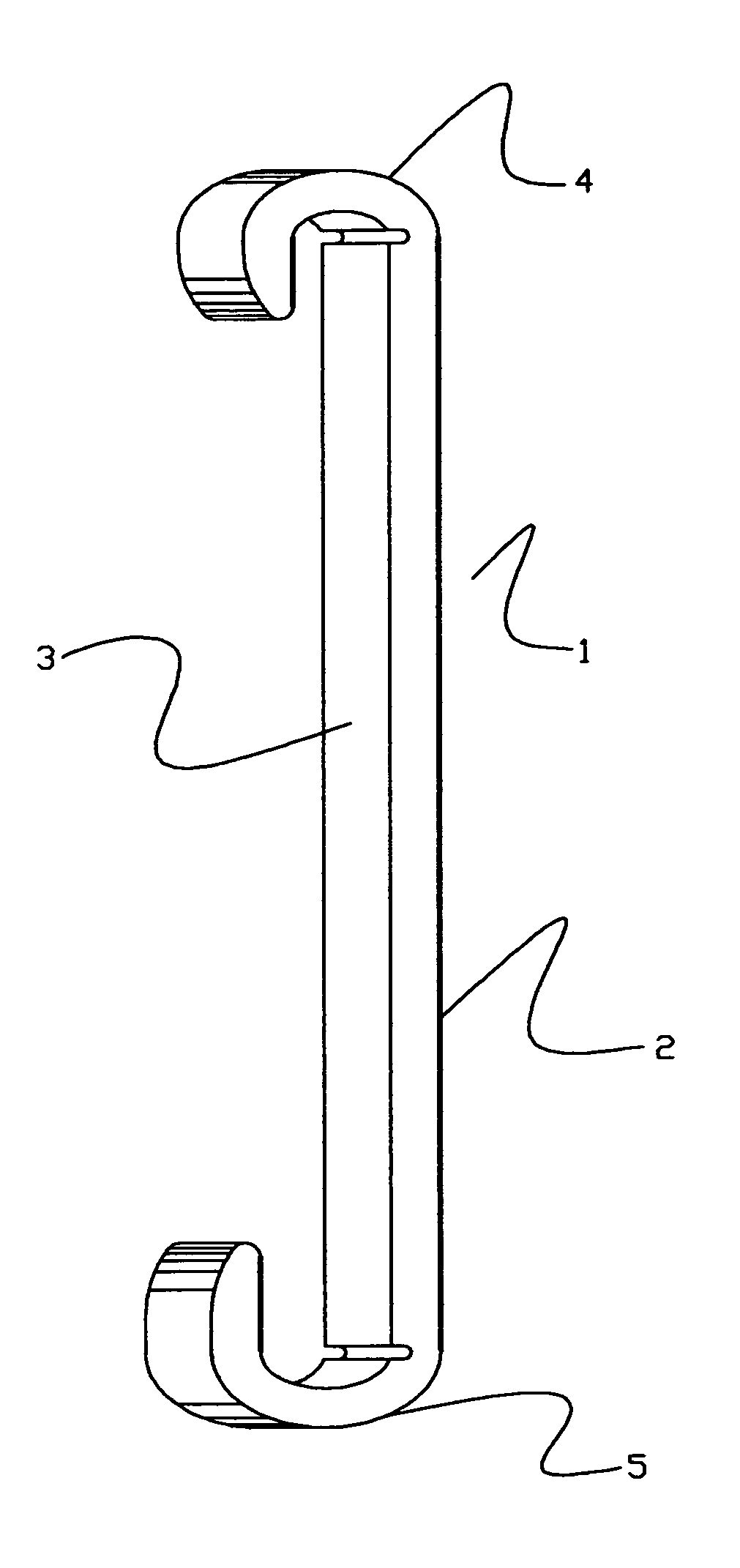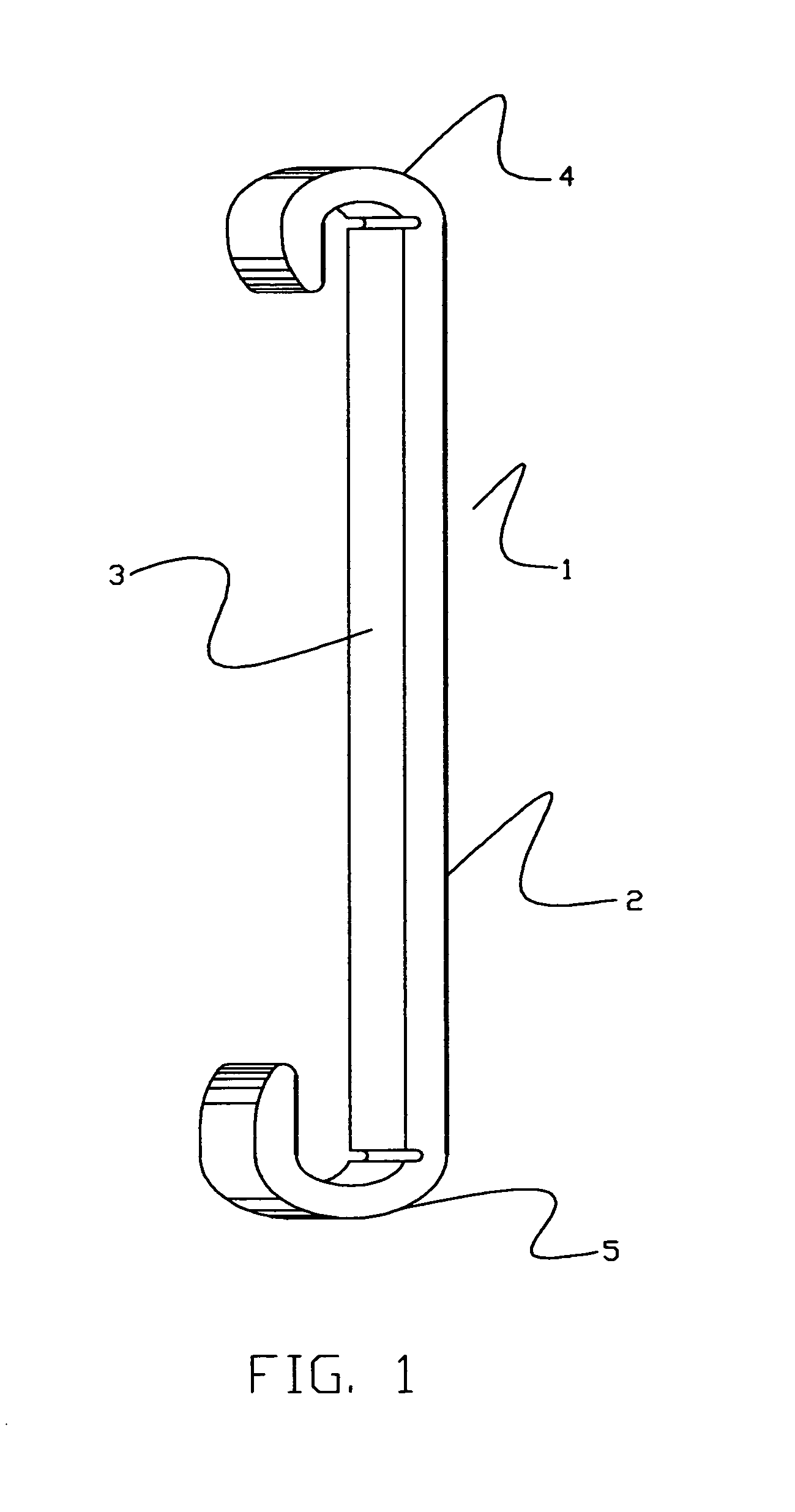Quasi open-end wrench
a technology of open-end wrenches and wrenches, which is applied in the field of open-end wrenches, can solve problems such as unaddressed
- Summary
- Abstract
- Description
- Claims
- Application Information
AI Technical Summary
Benefits of technology
Problems solved by technology
Method used
Image
Examples
Embodiment Construction
[0023]The preferred embodiment of the present invention is defined by FIGS. 1 through 5. FIG. 1 is an isometric illustrating an open-end wrench 1, having a shank 2 with a smooth planar surface 3, whereby planar surface 3 is the mutual torqueing jaw of fastener specific wrench heads 4 and 5.
[0024]Shown in FIG. 2 is the location of section 2A, planer surface of backup jaw 6, arcuate surface 7 of wrench heads 4 and 5, and planar surfaces 9, 10 and arcuate surface 11 of relief 8.
[0025]Refereeing now to FIG. 2A showing above normal thickness 16 allowing for greater gripping surface to backup jaw 6 and torqueing jaw 3.
[0026]FIG. 3, shows center line 12, passing through the intersection of planar torqueing jaw 3 and arcuate surface 7, locating the relief 8, having depth 14 which is slightly less than half thickness 13 thereby weakening the structure at this point and giving flexible quality to shank 2 when torque is applied, thus making surfaces 9, 10 of relief 8 and wrench head surfaces 6...
PUM
 Login to View More
Login to View More Abstract
Description
Claims
Application Information
 Login to View More
Login to View More - R&D
- Intellectual Property
- Life Sciences
- Materials
- Tech Scout
- Unparalleled Data Quality
- Higher Quality Content
- 60% Fewer Hallucinations
Browse by: Latest US Patents, China's latest patents, Technical Efficacy Thesaurus, Application Domain, Technology Topic, Popular Technical Reports.
© 2025 PatSnap. All rights reserved.Legal|Privacy policy|Modern Slavery Act Transparency Statement|Sitemap|About US| Contact US: help@patsnap.com



